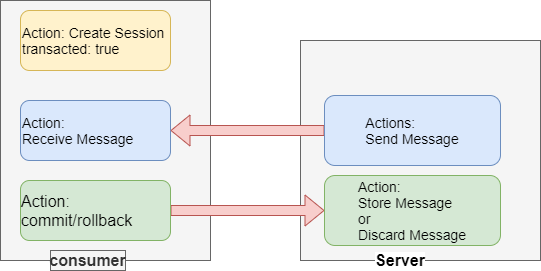1. JMS (Java Message Service, Java Message Service)
1.1 Definitions
The Java Message Service (JMS) API is an API for message-oriented middleware (MOM) in the Java platform, which is used to send messages between two applications or in a distributed system for asynchronous communication. Java Message Service is a platform-independent API.
1.2 Object Model of JMS
| name | describe |
|---|---|
| ConnectionFactory | connection factory |
| Connection | connect |
| Session | conversation |
| Destination | Purpose |
| MessageProducer | producer |
| MessageConsumer | consumer |
| Message | information |
| Broker | An instance of message middleware (ActiveMQ) |
1.3 JMS message model
-
Point-to-Point (P2P) / Peer-to-Peer
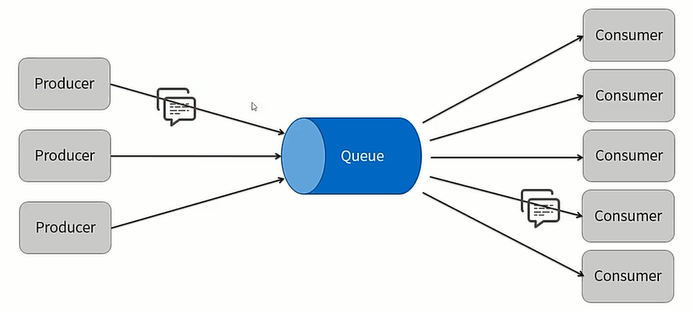
-
Publish/Subscribe (Pub/Sub) / Topic (pub/sub)
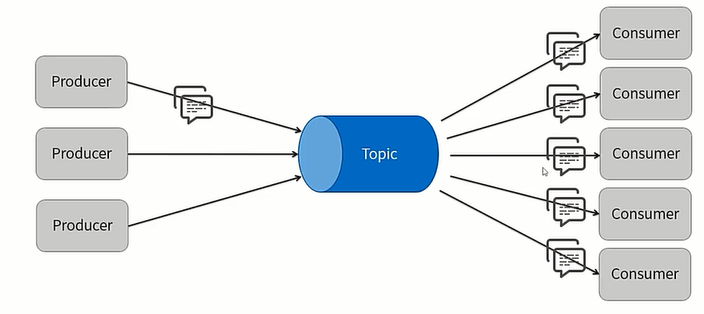
1.4 JMS message structure
Message header, message attributes, message body
-
header
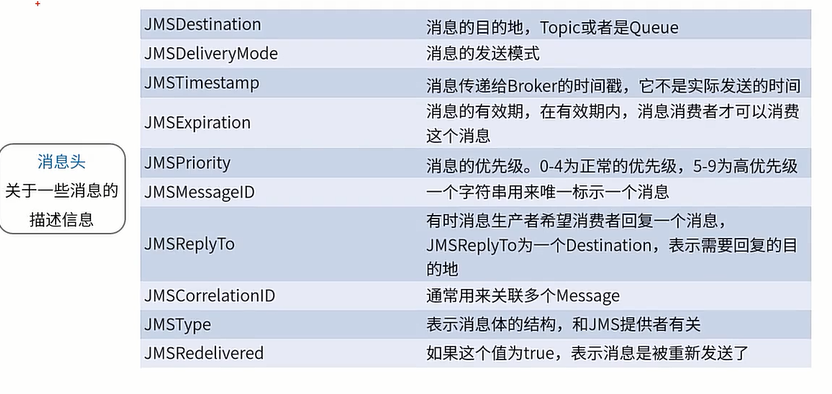
-
Message attribute: It can be understood as an additional message header of the message, and the attribute name can be customized

-
Informed body

2. ActiveMQ concept
2.1 Definitions
ActiveMQ is the most popular and powerful open source message bus produced by Apache.
ActiveMQ is a JMS Provider implementation that fully supports the JMS1.1 and J2EE 1.4 specifications. Although the JMS specification has been published for a long time, JMS still plays a special role in today's J2EE applications.
2.2 Features
- Supports multiple programming languages
- Supports multiple transport protocols
- There are multiple persistence methods
2.3 Which protocols does ActiveMQ support
- ActiveMQ supports multiple protocol transmissions and transmission methods, allowing clients to connect using multiple protocols.
- Protocols supported by ActiveMQ: AUTO, OpenWire, AMQP, Stomp, MQTT, etc.
- Basic transport methods supported by ActiveMQ: VM, TCP, SSL, UDP, Peer, Multicast, HTTP(S), etc., as well as more advanced Failover, Fanout, Discovery, ZeroConf methods.
2.4 OpenWire Protocol
2.4.1 What is the OpenWire protocol
OpenWire is a cross-language protocol of Apache that allows access to ActiveMQ from different languages and platforms, and is the default transport protocol for versions after ActiveMQ 4.x.
2.4.2 How to use the OpenWire protocol
OpenWire supports TCP, SSL, NIO, UDP, VM and other transmission methods. To configure these connections directly is to use the OpenWire protocol. OpenWire has its own configuration parameters. The parameter names of the client and server configuration are represented by the suffix "wireFormat." .
Example

Description of OpenWire configuration parameters
| Attributes | Defaults | describe |
|---|---|---|
| stackTraceEnabled | true | Whether the stack exception that has occurred and traced should be sent to the client through the Broker |
| tcpNoDelayEnabled | true | NoDelay parameter of socket |
| cacheEnabled | true | If repeated values are cached so that less marshalling (immediate send) occurs |
| tightEncodingEnabled | true | Automatically adjust the size of the transmitted content (compression ratio) according to the CPU usage |
| prefixPacketSize | true | Whether the size of each packet should be used as the maximum idle time for a prefix connection, in milliseconds, before each packet is marshalled (immediately to be sent). |
| maxInactivityDuration | 30000 | The broker service will close the timeout connection according to the configuration. At the same time, the connection can be maintained through the heartbeat mechanism. A value <= 0 disables monitoring of active connections. |
| maxlnactivityDurationInitalDelay | 10000 | After the connection is established, how long to start the timeout detection |
| cacheSize | 1024 | If it can be cached, then this specifies the maximum number of caches. This property was added in ActiveMQ 4.1 using the maximum frame size that can be sent |
| maxFrameSize | MAX_ LONG | Can help prevent OOM DOS attacks |
2.5 Why use the MQTT protocol
The structure of MQTT is simple, and it is more lightweight than other message protocols. It is suitable for use in a network environment with limited computing power, low bandwidth, and unreliability.
2.5.1 MQTT's publish-subscribe model
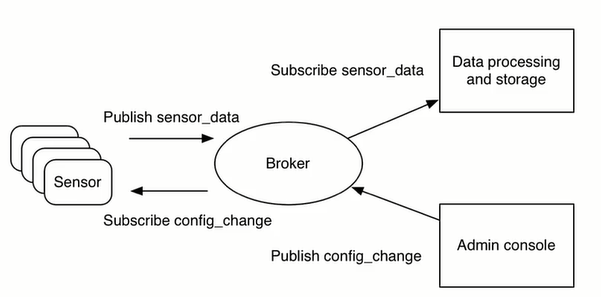
2.5.2 MQTT Service Quality
A Quality of Service (QoS) level is a guaranteed protocol for the delivery of information between sender and receiver. There are three QoS levels in MQTT:
- At most once (0)
- at least once (1)
- only once (2)
QoS is a major feature of MQTT that makes it easier to communicate over unreliable networks, because the protocol can control whether messages need to be resent and ensure that they arrive even in very unreliable networks. It also helps the client to freely choose QoS according to the network environment and program logic.
2.5.3 How to use the MQTT protocol in ActiveMQ
ActiveMQ server side configuration
<transportConnectors>
<!-- DOS protection, limit concurrent connections to 1000 and frame size to 100MB -->
<transportConnector name="mqtt" uri="mqtt://0.0.0.0:1883?maximumConnections=1000&wireFormat.maxFrameSize= 104857600"/>
</transportConnectors>
MQTT configuration parameter description
| Attributes | Defaults | describe |
|---|---|---|
| maxFrameSize | 268435456 | (v5.12.0) Maximum frame size that can be sent. The protocol limit is 256MB and its value cannot be set higher. Can help prevent OOM DOS attacks |
Configuration example
<transportConnector name="mqtt" uri="mtt://localhost:1883?wireFormat.maxFrameSize=100000"/>
MQTT uses NIO
<transportConnector name="mgtt+nio" uri="mtt+nio://localhost:1883"/>
MQTT uses NIO + SSL
<transportConnector name="mqtt+nio" uri="mqtt+niossl://localhost:1883"/>
2.5.4 Spring uses MQTT
Spring Integration provides support for the MQTT protocol, which can be used by adding dependencies through Maven.
<dependency>
<groupld>org.springframework.integration</groupld>
<artifactld>spring-integration-mqtt</artifactld>
<version>5.1.1.RELEASE</version>
</dependency>
2.6 What is the AUTO protocol
AUTO Automatically detect protocols Starting from ActiveMQ 5.13.0, ActiveMQ supports protocol format detection, which can automatically detect OpenWire, STOMP, AMQP and MQTT. Allows these 4 types of clients to share a transport
AUTO uses TCP
<transportConnector name="auto" uri="auto://localhost:5671"/>
SSL using AUTO
<transportConnector name="auto+ssl" uri="autssl://localhost:5671"/>
Use AUTO NIO
<transportConnector name="auto+nio" uri="auto+nio://localhost:5671"/>
Use AUTO NIO + SSL
<transportConnector name="auto+nio+ssl" uri="auto+nioss://localhost:5671"/>
3. ActiveMQ high availability cluster solution
3.1 What are the cluster deployment methods of ActiveMQ?
| Master-Slave deployment method | Broker-Cluster deployment method | The deployment method of the combination of Master-Slave and Broker-Cluster |
|---|
3.2 Master-Slave deployment method
share the same file system
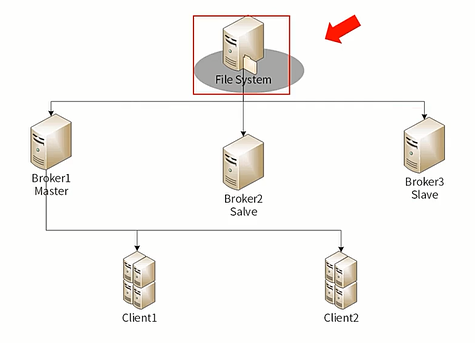
share the same database

3.3 Broker-Cluster deployment method

3.4 Deployment Method Combining Master-Slave and Broker-Cluster
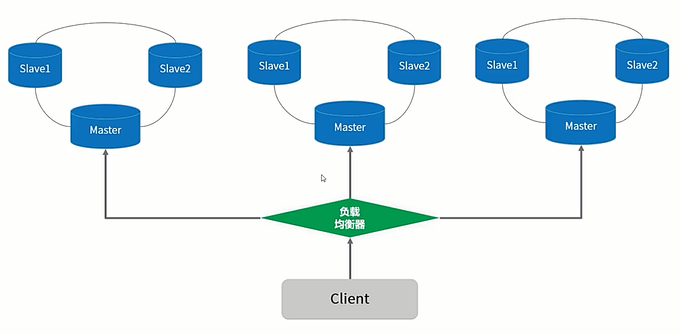
4. ActiveMQ persistence mechanism
4.1 Persistence mechanism of Queue type
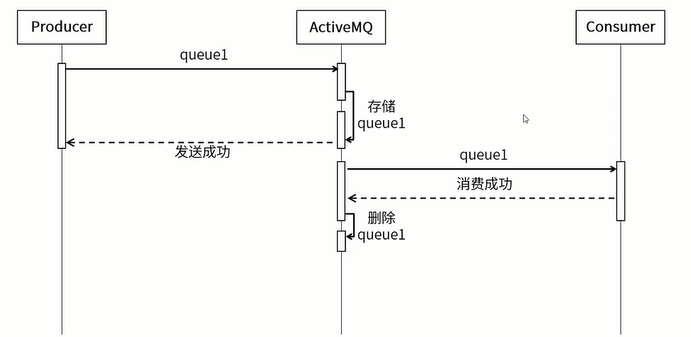
4.2 Topic type persistence mechanism

4.3 Storage method
4.3.1 JDBC method
Store messages into databases such as: Mysql, SQL Server, Oracle, DB2, etc.
| advantage | shortcoming |
|---|---|
| Easy to manage | low performance |
| Can support strong consistency | / |
4.3.2 AMQ method
The file-based storage method has the characteristics of fast writing speed and easy recovery. However, because it takes too long to rebuild the index, and the index file occupies too much disk space, it is no longer recommended.
| advantage | shortcoming |
|---|---|
| Better performance than JDBC | Index takes up a lot of disk space |
| / | Reindexing is very slow |
4.3.3 LevelDB method
LevelDB is a set of high-performance class libraries developed by Google for persistent data. LevelDB is not a service, and users need to implement Server by themselves. It is a single-process service, capable of processing billion-level Key-Value data and occupies a small amount of memory.
Features
- Based on KV storage
- Key values are stored in order
- Simple operation interface
- Support data snapshot
- Support data compression
Structure of LevelDB
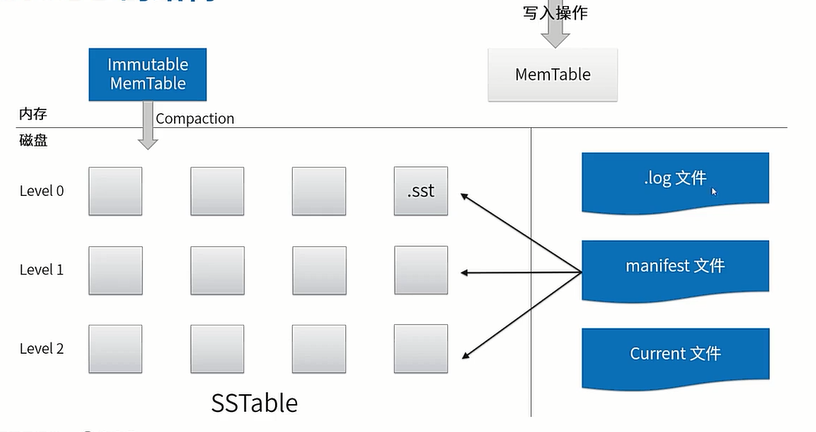
ActiveMQ configuration LevelDB : modify the configuration file ${ACTIVEMQ_HOME}/conf/activemq.xml
<persistenceAdapter>
<levelDB directory="${activemq.data}/activemq-data"/>
</persistenceAdapter>
5. ActiveMQ transaction implementation mechanism
ActiveMQ transactions achieve eventual consistency
The producer-side implementation mechanism is as follows:
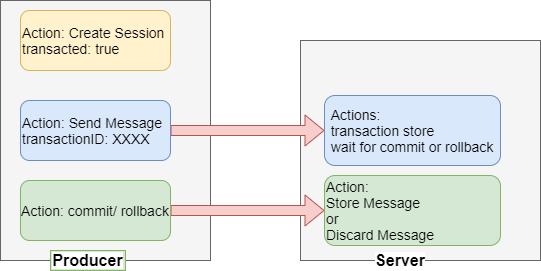
The implementation mechanism on the consumer side is as follows:
